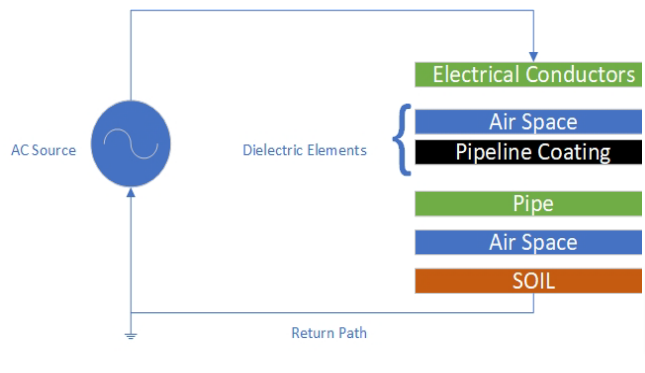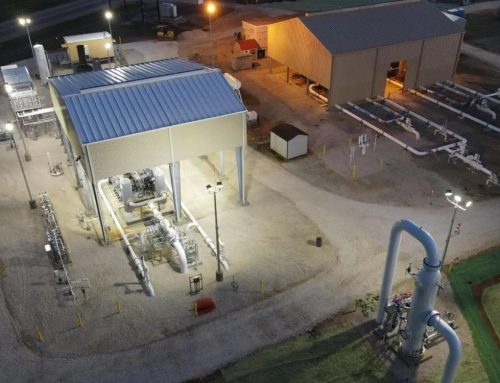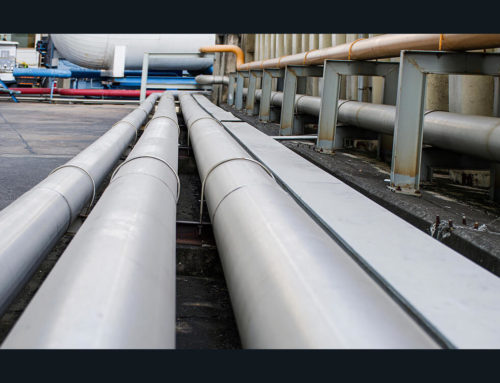Alternating Current Interference Mitigation on Pipelines
Presented by: John Evans
INTRODUCTION
The installation of pipelines within electrical power distribution rights of way is becoming increasingly common as available land and routing options are limited due to a variety of causes. While the utilization of these rights of way is not new, our knowledge related to the alternating current interference and corrosion effects induced on co-located pipelines and structures in general continues to evolve. Unfortunately, while the corrosion process itself is straight forward, predicting the effects of Alternating Current (AC) interference is a complex matter with a significant number of variables requiring sophisticated mathematics to analyze the system. Most interactions between co-located pipelines and overhead electrical power distribution infrastructure require specialized software or complicated analytical techniques to render actionable results. Electrical energy can be transferred to a pipeline from overhead power lines in several different ways, conductive coupling (usually fault conditions), capacitive or electrostatic coupling, and inductive or electromagnetic coupling, just to name a few. The high voltages and high currents encountered on these systems, combined with long distances of parallel electrical lines and pipelines create an arrangement that could result in significant interference requiring an engineered solution. Fortunately, the methods for dealing with the transferred energy are not overly complex; but, an understanding of the transfer mechanism is useful in engineering effective mitigation measures.
ELECTRICAL ENERGY TRANSFER
There are several ways in which electrical energy is transferred onto a pipeline; but interference problems are most often encountered with three-phase power transmission lines. Discussed here are the common AC coupling modes directly associated with overhead transmission and distribution power lines co-located with pipelines. It should be noted that telluric or earth currents that are geomagnetically induced are not specifically discussed technically in this document, but should be recognized as having a potential impact to the interference mitigation systems due to their similarity to AC power lines. Mitigation of telluric currents bears a striking resemblance to mitigation of interference for AC distribution as they are both induced currents. At a minimum considerations to compensate for telluric current effects during close interval survey should be included
Conductive Coupling
Significant amounts of energy can be transferred to the pipeline during a short circuit or fault condition on an overhead transmission system resulting in a line-to-ground short circuit. While electrical faults are abnormal, given the life span of pipelines, the likelihood that a pipeline will be exposed to a line-to-ground fault is very high and the risks should be mitigated to prevent damage to the infrastructure. Electrical faults on the power lines can occur as a result of lightning, high winds, structure or insulator failure, or even accidental contact between the power line and another structure or piece of construction equipment.
During fault conditions the energy being transmitted by the power line will return to its source using all available paths including static lines, shield wires, the earth, and even pipelines. The path of the fault current is predicated upon the relative impedances of all parallel paths available to the fault. Separation distance between the faulted system and the pipeline as well as the impedance between the pipeline and the surrounding soils are critical factors in determining the expected current flowing through the pipeline. Pipeline coatings contribute significantly to the impedance between the earth and the pipeline. The higher the coating quality (fewer holidays) and the higher the coating’s rated breakdown voltage, the lower the amount of current carried by the steel. Unfortunately, the magnitude of a fault current can be many times greater than the steady state current normally present in the power lines and can result in high pipeline voltages. Fortunately, these fault currents are only present for very short periods of time as the power line protective system can react in milliseconds to remove the fault, but even that short period of time can result in coating damage, melting, or cracking of the pipeline to say nothing of the safety hazards presented to pipeline personnel and even the general public where accessible.

Capacitive or Electrostatic Coupling
During capacitive coupling, energy is transferred through the natural capacitance that exists between two conductors separated by a dielectric material (electrical insulator). This type of energy transfer is often encountered during the construction process, where the power line and the pipe are separated only by air and the pipeline coating. The electromagnetic field of the AC transmission line can induce a charge on the aboveground pipe that is isolated from ground. This arrangement forms a simple capacitor. A key value in the evaluation of this system is capacitance which is a measure of the ability to store an electric charge. Capacitance is proportional to the area of the conductors but inversely proportional to the separation between the conductors.





